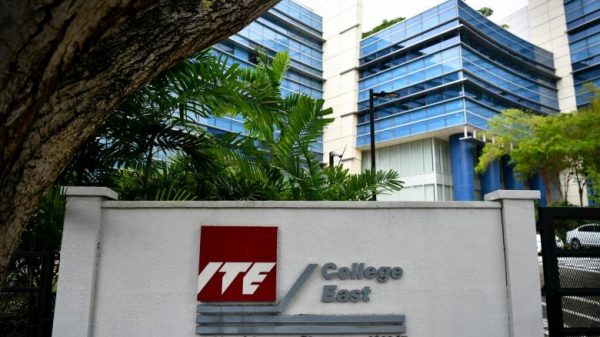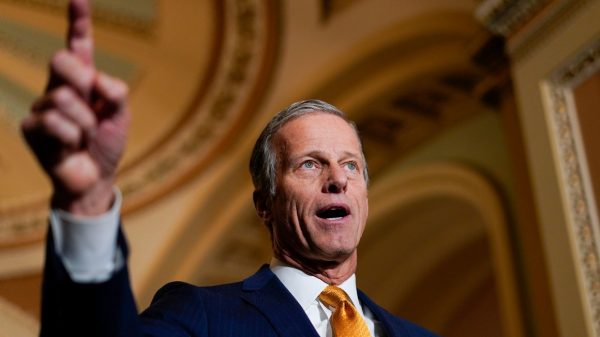“It came without ribbons. It came without tags. It came without packages, boxes or bags.”
Christmas came to Whoville, despite the Grinch’s efforts to steal it, and it will come to the U.S. this year, despite all the supply-chain and staffing problems the pandemic has brought on. Those boxes and bags will cost more, though, helping the best-positioned retailers avoid markdowns and offset spiraling costs. Americans will grit their teeth and pay up and, when they can’t find just the right physical item, they will opt for more virtual ones—digital games, gift cards and subscriptions.
In terms of dollars spent, it will be a holiday season to remember. For companies that can’t provide consumers with what they want, though, it will be the season that might have been.
When it comes to stocking physical shelves everything, it seems, is in short supply. Goods made overseas are slow to ship, slow to arrive, and then left to sit on the dock for days waiting to be moved from port.
Nike
said last month that it is taking roughly twice as much time to move products from Asia to North America as usual, for example. The delays don’t end there either, with trucking companies struggling to hire enough drivers to keep goods moving.
Retailers have labor concerns, too. As of the end of August, there were 1.3 million unfilled job openings in the sector, according to the Labor Department, compared with 901,000 in August of 2019. Since then, a number of retailers have announced ambitious hiring plans for the holiday shopping season. Both
Amazon.com
and
Walmart
have said they would like to hire 150,000 seasonal workers, for example. Stores unwilling or unable to pay up for labor face the prospect of struggling to serve customers during the most profitable time of the year.
Still, it is hardly as if nothing is making it into ports and onto store shelves. More shipping containers arrived at the four busiest American container ports in July and August than during the same months of 2020 and 2019. Commerce Department figures show the value of inventories at general merchandise retailers, a group that includes giants such as Walmart and Target, as well as department stores, came to a seasonally adjusted $87.2 billion in August compared with $76.3 last August and $82 billion in August 2019.
Keeping things on store shelves when demand for wares is strong is another matter: The ratio of inventory to sales at retailers of all stripes is significantly lower than it was before the pandemic.
That’s because people are heading into the holidays with plenty of available money to spend: Rising incomes, government relief checks and reduced spending early in the pandemic have left people with more to spend. Federal Reserve figures show that, as of the end of the second quarter, Americans of all incomes held more cash and cash equivalents than a year earlier or prior to the pandemic. Falling Covid cases, the expected vaccine eligibility for younger children and the wide availability of jobs could make it a season of cheer for shoppers.
Many of those shoppers are aware of supply-chain constraints and have begun shopping for gifts earlier than usual. A survey from The NPD Group showed that 51% of U.S. consumers plan to start their 2021 holiday shopping before Thanksgiving Day, up slightly from last year. Retailers are nudging shoppers to do so: Amazon started offering “Black Friday-worthy deals” on Oct. 4 and Target started its holiday deals event on Oct. 10.
Best Buy
and
Kohl’s
have also already begun their holiday sales events.
Best-placed to benefit from shoppers’ eagerness to spend are the companies with the means and scale to work around some of the shipping snags to keep their shelves well-stocked. Walmart,
Home Depot,
Costco
and Target are among those paying for their own chartered ships, for example, which should allow them to bring holiday-specific products most likely to fly off the shelves. Meanwhile, retailers selling higher-value goods such as electronics and luxury items will be able to shell out more for air freight compared to dollar stores that sell cheaper items. Sellers with non-traditional sourcing models, such as Etsy, will still face transportation delays but could have an edge over traditional retail because those products are made in many people’s homes or warehouses, not concentrated in a few factories abroad.
One wild card is whether consumers will spend heavily on material gifts—as they did last holiday season—when vaccinations are allowing people to eat out and travel again. A survey conducted by
Accenture
showed that roughly 43% of consumers plan to redirect their holiday-season spending to gifts that don’t come in physical packages such as travel, dining out, concerts and salon treatments. Moreover, consumers who are unable to locate what they want on shop shelves might opt for non-physical alternatives.
A shopper who can’t find the latest game console might opt for a gift card from
GameStop
or Steam to download video games instead, for example. More people may also opt for gift cards for restaurants—including large chains like
Darden Restaurants
—or even websites that offer experiences like StubHub or
Groupon.
Those that can’t find the yoga pants or gym gear they want for their friends may choose to get fitness subscriptions for them instead on Peloton or ClassPass.
Americans will spend plenty of money this Christmas, but not every retailer is going to get a pony.
Write to Justin Lahart at justin.lahart@wsj.com and Jinjoo Lee at jinjoo.lee@wsj.com
Copyright ©2021 Dow Jones & Company, Inc. All Rights Reserved. 87990cbe856818d5eddac44c7b1cdeb8













































